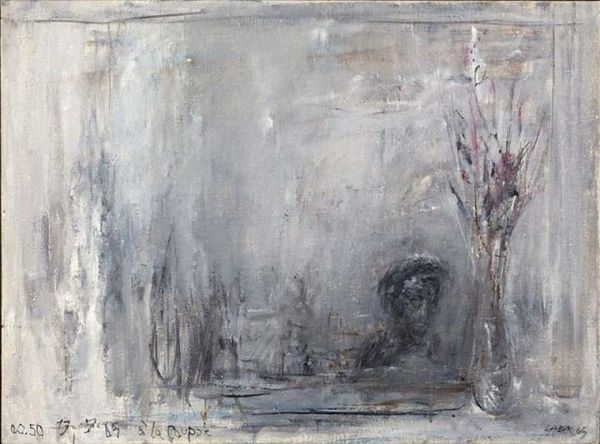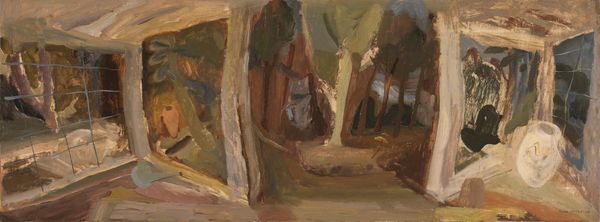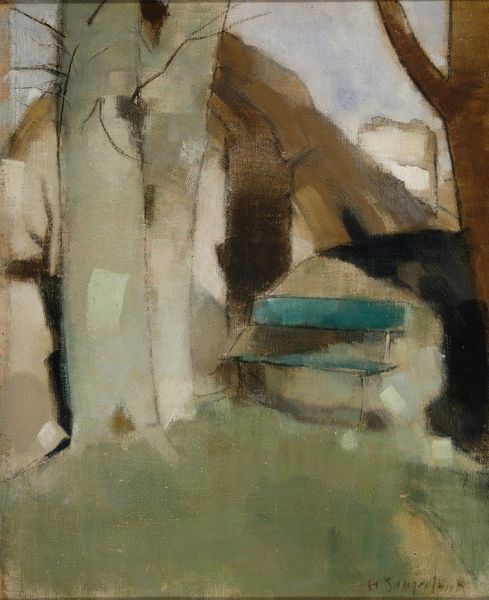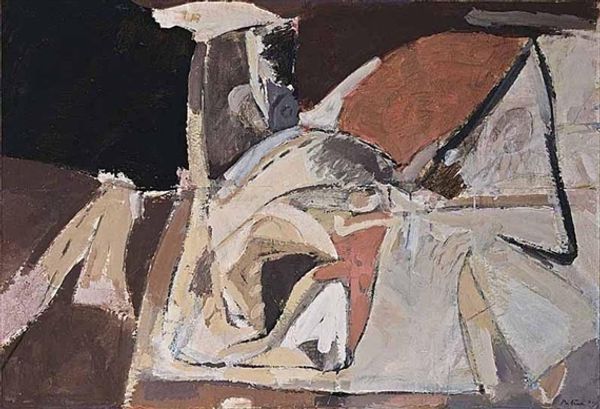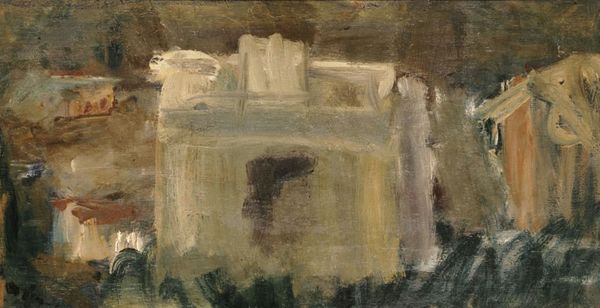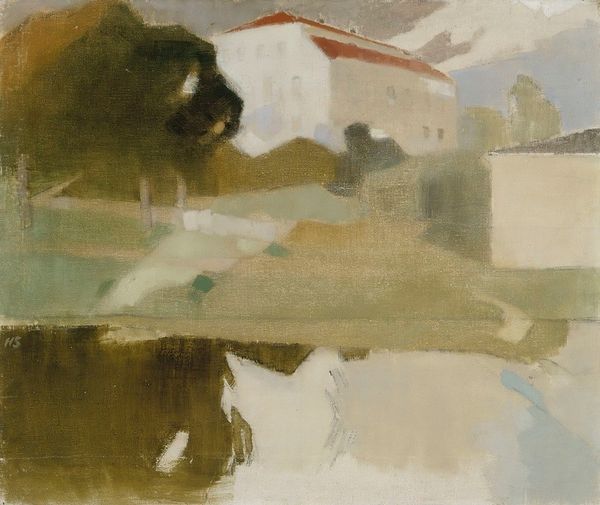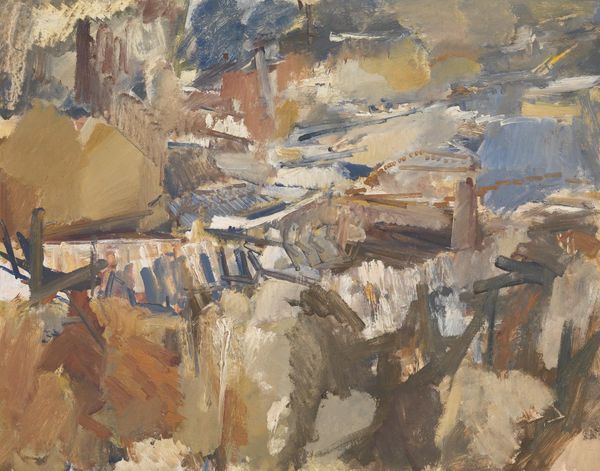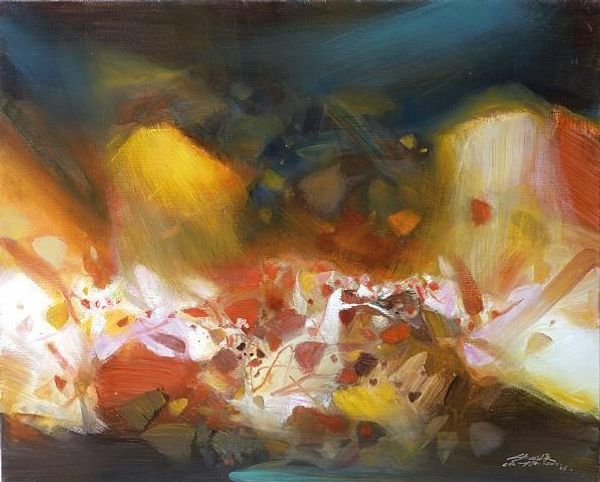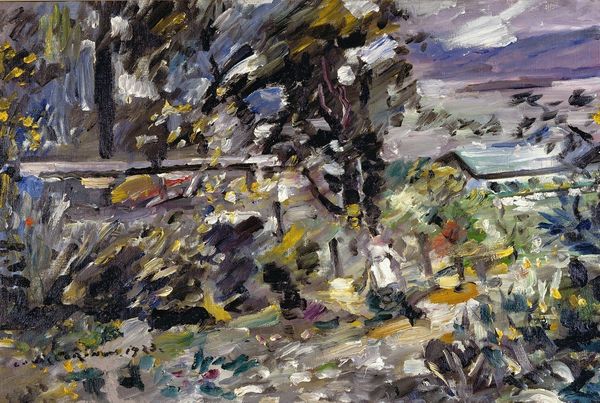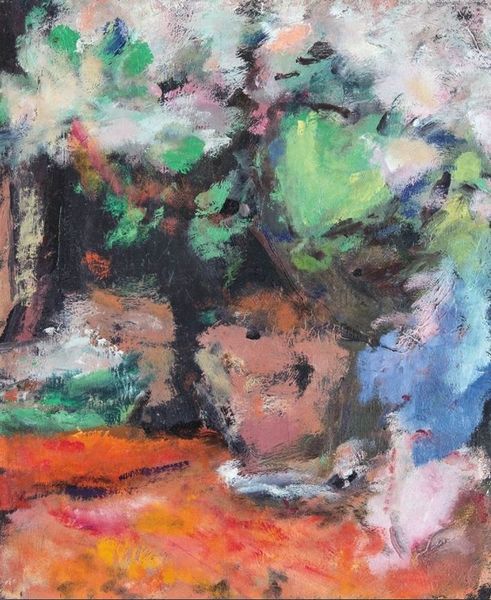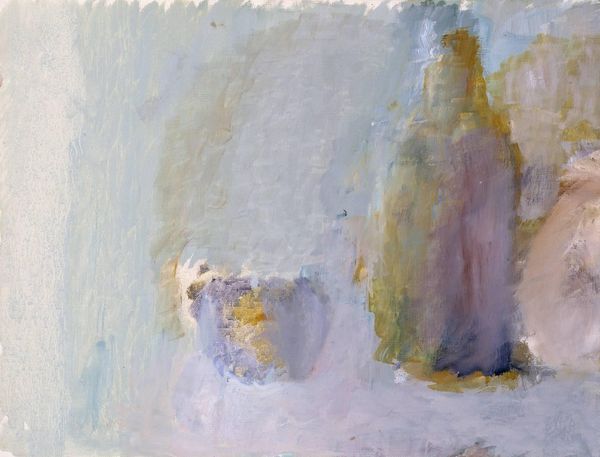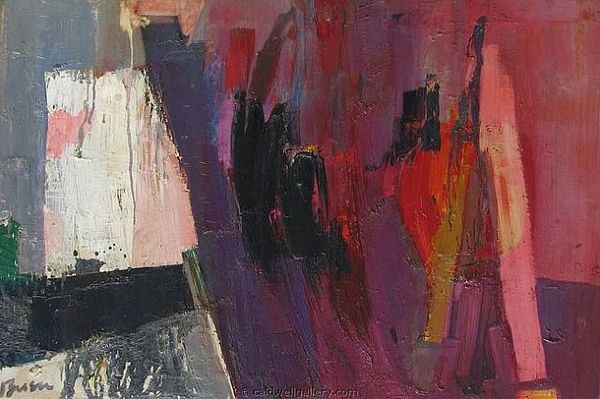
oil-paint
#
oil-paint
#
landscape
#
charcoal drawing
#
oil painting
#
modernism
#
realism
Copyright: Edwin Dickinson,Fair Use
Curator: Edwin Dickinson’s oil on canvas, "Studio Wellfleet," painted in 1947, offers a glimpse into a personal creative space. Editor: It feels quite muted and almost ghostly; the scene is there, but softly, like a fading memory. The lack of sharp definition adds to that feeling. Curator: Dickinson was part of a vibrant art scene in Wellfleet, Massachusetts. Many artists flocked there, drawn to its natural beauty, affordable living, and a sense of artistic community. The historical context reveals the growth of American modernism beyond New York City. Editor: And how do you see that represented through Dickinson’s method, like the blurring? He is using the oil paint not to illustrate depth and clarity but the opposite. Almost like how the fleeting nature of the studio practice makes art possible in the first place. It is an intentional blurring between domestic comfort, labor, and fine art that I find engaging. Curator: Absolutely. The canvas, the type of brushes he employed, even the consistency of the pigment, it all fed into Dickinson’s vision. It shows a deliberate challenge to more rigid academic painting styles. Also, think about Wellfleet: its history was rooted in fishing and maritime trades, so the establishment of this art scene created tension and possibilities, impacting production as well. Editor: Do you think this scene, so particular to its time and the circumstances of postwar America, can speak to contemporary artists today? Curator: I think so. Dickinson used materiality and this moment as the lens. Artists, regardless of era, share an understanding of material engagement and contextual interpretation. It is timeless and speaks to us now. Editor: I agree. Dickinson shows us how closely an artist can relate and reflect a landscape of feeling and history, transforming raw material into visual storytelling.
Comments
No comments
Be the first to comment and join the conversation on the ultimate creative platform.
